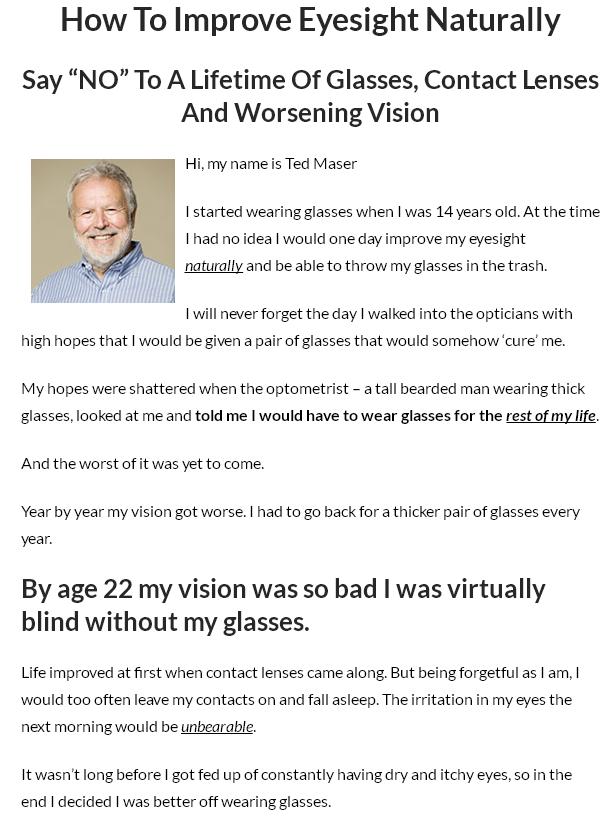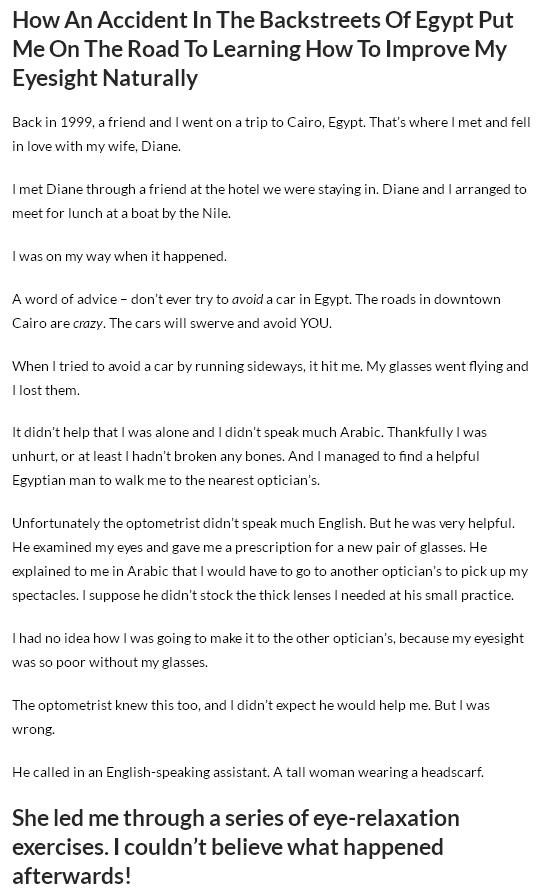Myopia, more commonly referred to as nearsightedness, is a condition of a person’s vision that makes close objects appear clearly, but objects that are further away appear blurry. This condition occurs when a person’s eyeball is too long, or if the cornea, which is the front covering of your eye, has excessive curvature.
When this occurs, the light that enters the eye does not focus correctly, which causes objects in the distance to appear blurred.
Myopia affects almost 30 percent of people in the U.S. There are some studies that have concluded that the occurrence of nearsightedness is a hereditary trait. However, there is also some new evidence which supports the fact that nearsightedness is brought on by visual stress caused by too much work up close.
Signs of Nearsightedness
One of the most common ways that a person begins to recognize nearsightedness is the fact that objects in the distance, such as the television screen, movie screen or chalkboard (for younger individuals), appears blurry.
An eye exam from an optometrist will be able to determine if you suffer from nearsightedness.
 Diagnosis Methods for Nearsightedness
Diagnosis Methods for Nearsightedness
During an eye exam, the optometrist will use several tests to measure how your eyes focus light and then determine the amount of power that is needed for an optical lens to correct the vision problem that exists.
Distance Chart
This is one of the most common tests when visiting the eye doctor. The patient is asked to read letters on the distance chart, which will measure visual acuity. This measurement is written as a number, for example 20/20.
The top number represents the distance at which the testing is performed and the bottom number represents the smallest letter that the person could read. For example, if a person has 20/40 vision, they read the chart at a distance of 20 feet and the smallest letter that could be read was a letter that could be seen at 40 feet by the normal eye.
A phoropter is another tool used by an optometrist to test vision. This will include placing a lens in the front of a person’s eyes and then measure how they focus on the light by using a hand held instrument known as a retnoscope.
The testing can be done with or without the use of eye drops. The drops main purpose is to keep the eyes from changing focus when the testing is going on. Once all information is gathered the doctor will be able to determine if the patient suffers from nearsightedness.
Treatment Methods for Nearsightedness
There are several different methods that are used for the treatment of nearsightedness. The most popular types of treatment are:
Glasses or Contacts
The most common treatment for a person suffering from nearsightedness is the prescription of corrective lenses in the form of glasses or contacts. These will be shaped to bend the images that enter the eyes, and focus the light so that the images are perceived clearly at the back of the eye.
There are some individuals who only have to wear the corrective lenses for certain activities, such as driving or watching television. However, if the condition is severe, the individual may have to wear the corrective lenses all the time.
Orthokeratology
This is more commonly referred to as corneal refractive therapy. This is a procedure that does not require surgery. Instead you will wear a series of custom designed contact lenses that are extremely rigid. These lenses work to reshape the corneas curvature in a gradual manner. These lenses will place pressure on your eye’s cornea in order to flatten it. This will change how the light enters your eye and the manner in which it is focused.
Refractive Surgery
If you suffer from high levels of nearsightedness, refractive surgery options are available. This procedure involves the implantation of a small lens, placed directly into the eye, that has the desired optical correction. It will either be placed in front of the natural lens, which is referred to as a pahkic intraocular lens implant, or complete replacement of the natural lens, which is known as, clear lens extraction with a intraocular lens implantation. This procedure is very similar to the procedures that are used for any surgery patients that suffer from cataracts.
LASIK Surgery for Myopia
Instead of removing the tissue from the surface of your cornea, LASIK surgery will remove tissue from the inner layers. In order to perform this, the outer surface of the cornea is cut and then folded back in order to expose the tissue that is inside. Then the laser is used to completely remove the exact amount of tissue in the cornea that is needed to successfully reshape the eye. Once the reshaping is completed, the outer flap of tissue is put back into the proper position to allow for healing.
When LASIK is used for nearsightedness, the effectiveness is limited due to the amount of tissue in the cornea that can be removed safely. In some cases, individuals who are extremely nearsighted have corneas that are too thin to safely use LASIK procedures. Instead, these individuals may need to have their vision corrected by having small lenses implanted into their eyes.
Natural Alternatives and Vision Therapy to Cure Myopia
Keep in mind there are risk factors that accompany any surgery. There is no reason to take the risk that LASIK surgery presents when there are natural and proven effective, methods to improve your vision.
Natural vision improvement techniques called “natural vision therapy” or “eye exercises” provides a proven plan that will allow you to rebuild your vision naturally. When you strengthen and relaxen your eye muscles (like you would any other part of your body) you will improve your vision and may be able to completely eliminate the need for corrective lenses.
Want to learn more about natural vision therapy and eye exercises?



